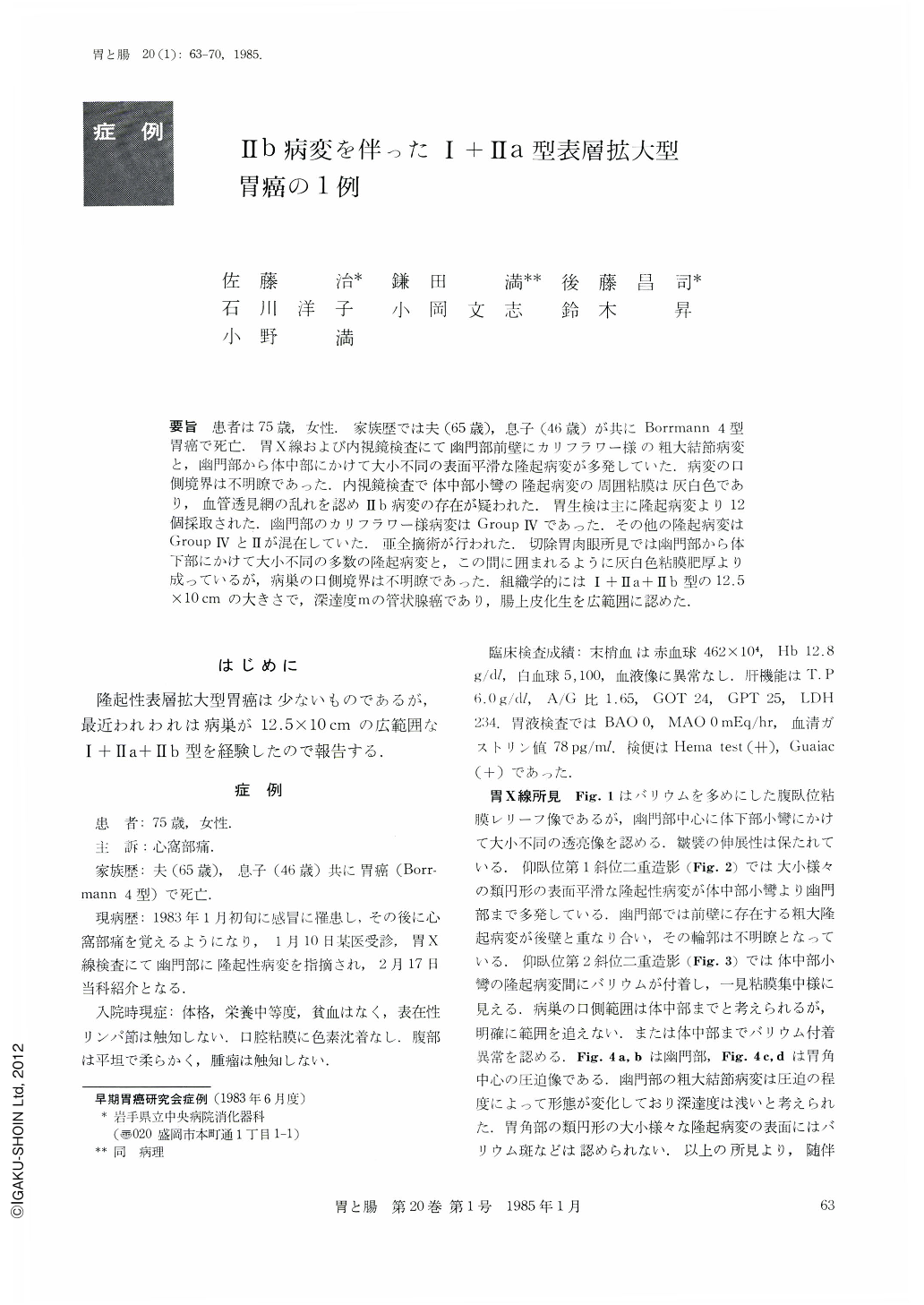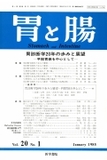Japanese
English
- 有料閲覧
- Abstract 文献概要
- 1ページ目 Look Inside
要旨 患者は75歳,女性.家族歴では夫(65歳),息子(46歳)が共にBorrmann 4型胃癌で死亡.胃X線および内視鏡検査にて幽門部前壁にカリフラワー様の粗大結節病変と,幽門部から体中部にかけて大小不同の表面平滑な隆起病変が多発していた.病変の口側境界は不明瞭であった.内視鏡検査で体中部小彎の隆起病変の周囲粘膜は灰白色であり,血管透見網の乱れを認めⅡb病変の存在が疑われた.胃生検は主に隆起病変より12個採取された.幽門部のカリフラワー様病変はGroup Ⅳであった.その他の隆起病変はGroup ⅣとⅡが混在していた.亜全摘術が行われた.切除胃肉眼所見では幽門部から体下部にかけて大小不同の多数の隆起病変と,この間に囲まれるように灰白色粘膜肥厚より成っているが,病巣の口側境界は不明瞭であった.組織学的にはⅠ+Ⅱa+Ⅱb型の12.5×10cmの大きさで,深達度mの管状腺癌であり,腸上皮化生を広範囲に認めた.
The patient was a 75 year-old woman whose hushand and son died of Borrmann Type 4 carcinoma of the stomach at the age of 65 and 46, respectively. In January 1983 she suffered from common cold and subsequently began to have epigastric pain, with which she consulted a certain doctor. At that time she was noticecd of her having an elevated lesion in the pylorus as revealed by stomach x-ray. She was referred to us on February 17 of the same year. Gastric x-ray and gastroscopy revealed a cauliflowerlike gross tuberous growth on the anterior wall of the pylorus and multiple elevated lesions with smooth surface of varying size over an area extending from the pylorus to the middle of the body. The borders of these lesions were indistinct on their superior side. On endoscopy the mucosa surrounding elevated lesions situated on the lesser curvature side of middle body appeared greyish white and there was noted a disorderly network of blood vessels, the presence of a Ⅱb lesion thus being suspected. Twelve biopsy specimens were taken mainly from elevated lesions. The cauliflower-like lesion of the pylorus was identified histopathologically as a Group Ⅳ carcinoma. Other elevated lesions were classified into Group Ⅳ or Ⅱ. Subtotal gastrectomy was performed. Macroscopic observation of the excised stomach disclosed numerous elevated lesions of varying size scattered over an area from the pylorus and the lower portion of the body and interjacent greyish white thickened mucosa. The upper boundary of the growth was ill-defined. Histologically, these lesions were demonstrated to represent a Ⅰ+Ⅱa+Ⅱb type tubular adenocarcinoma, 12.5×10 cm in size, with a depth of invasion of m and exhibiting extensive intestinal metaplasia.

Copyright © 1985, Igaku-Shoin Ltd. All rights reserved.


